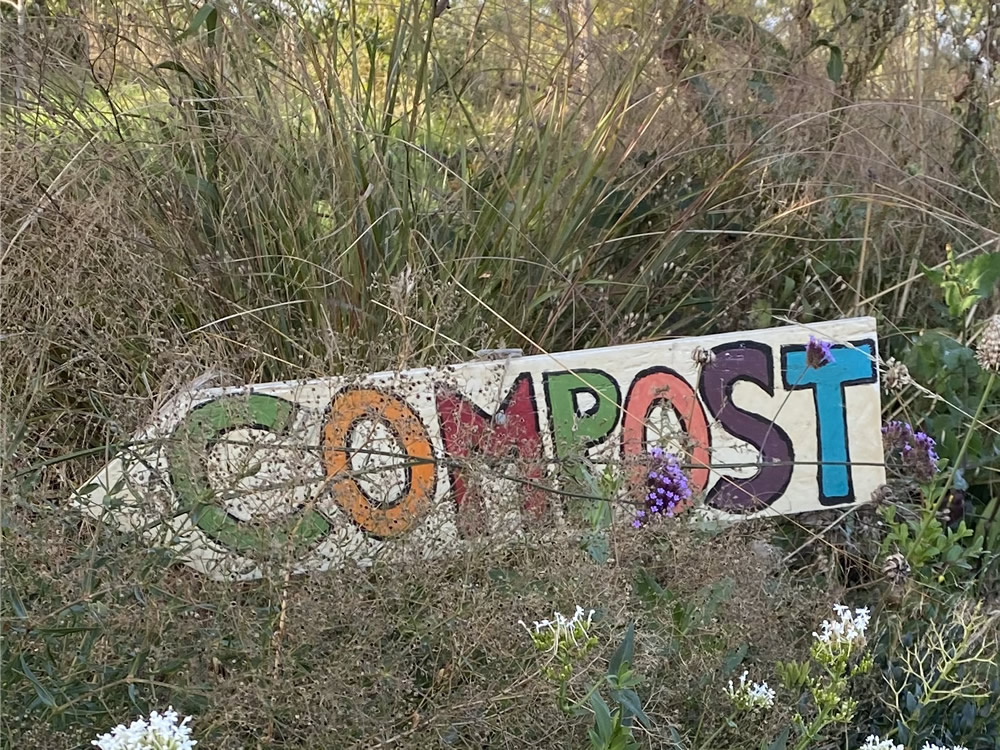Winter can be a hard time for many people. The shorter, colder days might make it more difficult for us to get outside and enjoy nature in the ways we would at other times of the year.
However, there are some meaningful winter gardening activities that we can do to help our mental health and prepare our gardens ready for the coming warmer, lighter seasons. If there is ever a time to foster hope and anticipation for new life, that time is winter. It’s also the perfect season to to really nurture our most valuable resource in the garden, our soil. So, let me tell you about the useful activities we can do in our UK meteorological winter months:
Early winter
I don’t like to tidy up too much in autumn and winter. Old stems and fallen leaves make great habitats for wildlife to hibernate and shelter from the elements. However, there is much to be said for that great feeling of making a clean slate ready for a new season. This can be very satifying, especially if we think of weeds as worries that can be worked out and left behind. So, in my own garden I tidy up the areas where I grow salads and veggies and I let the flower beds and borders stay messy for a little longer – the best of both worlds.

Adding well rotted manure or home made compost as a mulch to your newly tidied beds will protect the soil and feed the life inside it during the harshest weather months. You can vary the physical intensity of this job based on yours and the garden’s needs. Either way, this type of physical garden job equates to a workout and like any other form of exercise helps boost the serotonin in our brain, which is our own natural mood enhancer. In turn this can also help raise our self-esteem, aid better sleep and increase our appetite and the movement will help keep us warm too.
Some bulbs can be set at this time of year. Although November is better, it is usually December by the time I get around to planting my garlic and tulips and that’s OK. As long as the soil isn’t frosted or too hard you can still pop them into the ground in time for them to have the period of cold they need before the spring. This is the start of a truly magical process from which you will benefit as soon as the happy sight of green shoots appear.
Mid-winter
Slow down, this is hibernation time. Rest is important.
The light is low now and the weather may not be not conducive to being outdoors, so get creative indoors. Here is your chance to dream and plan. Either online or on paper make a mood board of garden designs, plants, colours and themes. Looking at pictures of nature has shown to have comforting and uplifting effects even when we are not actually outdoors experiencing the real thing. Put together some garden ideas that suit you. Do you want a serene and calming space or something more energetic? Do you want to grow herbs to use in cooking, teas and tinctures or flowers to cut and bring indoors or share with friends? Read up on how different plants can be used for self care, such as making healing calendula oil or calming chamomile tea. Consider growing fresh edible flowers to brighten up your food or dry and press blooms for crafts. So many possibilities and things to look forward to, giving us hope for the future.

Maybe start a journal at the same time. Writing down our thoughts can help us regulate our emotions and help us better understand any difficult situations we are going through. The journal could be kept alongside a garden diary, recording what you grew, how you used it, any surprises and what you would change next time.
Although mid-winter is not the time to sow seeds, there is one great exception to the rule. Salad, herb and pea shoot microgreens can be grown on a bright windowsill all year round. This is a super speedy way to enjoy the sowing fun that mostly belongs to spring yet we crave so much in January. We benefit from the nutritious seedlings – healthy food, healthy mind.
Late winter
Here in February is where we can see significant changes to the life in our gardens. The new buds on stems or blossom trees are forming into shape, the leaves of spring bulbs are well above the ground and some colour in the form of crocus flowers are appearing. Take notice, use them meditatively by searching for them and know that what you have been waiting for is almost here.

The waiting to sow seeds is over now too. We can begin with a first few indoors on windowsills such as tomatoes, chillis, onions, kale and hardy flowers like snapdragons and cosmos. If you have just purchased seed potatoes, they can be chitted on windowsills too. Both of these activities are setting in motion the beginnings of the season, anticipation of things to come and a nurturing of living things.
As the chill starts to ease towards the end of the month, make a compost heap or wormery. This wonderous process takes so little effort but brings so many rewards. In nature’s very own extraordinary circular economy you put in vegetable scraps and garden waste and take out food to grow more flowers and vegetables, which in turn feed you!
And there you go. After the three months of winter you make it through to spring. The mornings and evenings are lighter, there’s a new warmth in the air, the birds sing louder and colour is appearing everywhere.
